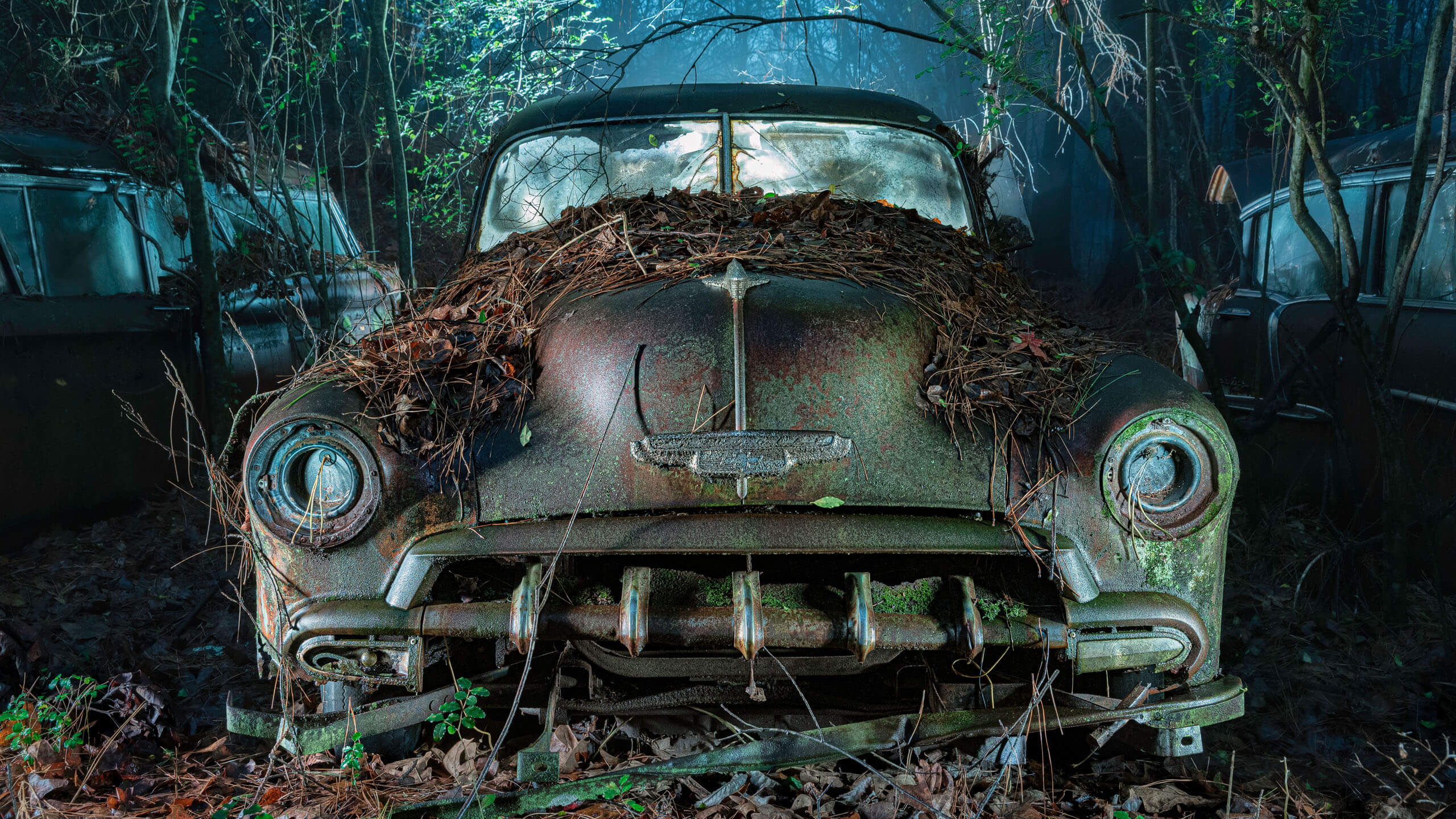You can create a great sense of mystery by light painting old vehicles on foggy, misty nights. I describe how I light-painted this old Chevrolet car in six steps.
A quick word about light painting
Light painting is a term that is often used loosely to describe any addition of light to a night photograph. Really, though, light painting is a technique that uses a handheld light source to illuminate a scene or subject during a long exposure. You are quite literally painting the scene with light. Night photographers have used this technique for many decades.
I used a handheld white light from an RGB Critter 2.0, made by Ants on a Melon, for all illumination. I photographed this car on a misty, foggy December evening in a forest in rural Georgia.

1. Creating detail and illumination from camera left
I stood about 10 feet to the left of the car at an angle of almost 90 degrees. Using a white light with my RGB Critter 2.0, I skimmed the light from that side.
2. Creating detail and illumination from camera right
Using the same angle on the opposite side. I did this to create not only detail and illumination but also symmetry.
3. Illuminating the grille and ground from camera left
I used a very low angle, holding the RGB Critter just a few inches from the ground. This was to illuminate a bit of the fantastic mouth-like front grille of the Chevrolet. But it was also to create a little detail and texture on the ground.
4. Illuminating the grille and ground from camera right
You know how to do this now, don’t you?
5. Illuminating the interior of the car
The car window on the driver’s side of the Chevrolet was broken. Very carefully, I reached inside, stuck the flashlight under the steering wheel, and moved it back and forth to illuminate the entire front windshield. I also got the shadow of the steering wheel by illuminating it in this manner.
6. Illuminating the fog
This was the cherry on top. Most of the time I photograph at night, I am in the Southwestern Desert. It doesn’t get foggy very much there. I took full advantage of the fog by lighting it up here. I stood in the back of the vehicle, crouching down, and simply waved my RGB Critter back and forth, lighting up the air around me. Fun!
This adds an extra layer of eeriness to the whole thing. Some people compare these foggy vehicle photos to John Carpenter’s 1983 supernatural horror movie “Christine.”
More information about the photo
I was able to light paint this entire scene in two and a half minutes. The single exposure was two and a half minutes f/8 ISO 400. I strongly prefer to nail all the lighting in one exposure if possible.
My feelings about this creative act of light painting
A lot of people look at light painting photos and think that they are fake. Especially given the amount of digital art, composites, and AI-generated art, I don’t suppose you can blame them. But light painting offers an opportunity to actively create a photograph. This is what I absolutely love about night photos with light painting.
It’s also absurdly addictive! Hours sometimes fly by like minutes. Before you know it, it’s 2:27 a.m. and you still have a big smile on your face from all that creating and waving a flashlight around in the dark. May you be inspired!
A vintage vehicle from earlier the same evening. I used the RGB Critter 2.0 to light paint this as well.
A vintage vehicle from earlier the same evening. I used the RGB Critter 2.0 to light paint this as well.
A vintage vehicle from earlier the same evening. I used the RGB Critter 2.0 to light paint this as well.
Source link






Leave a Reply